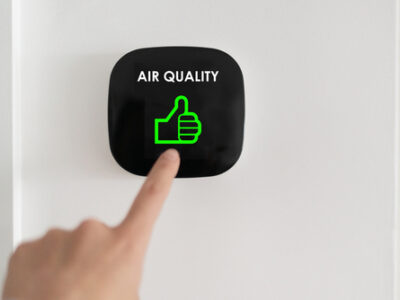Hazards of Poor Air Quality in the Home
 Hazards of Poor Air Quality in the Home
Hazards of Poor Air Quality in the Home
Air is one of the essential elements of life. We breathe in almost 20,000 liters of air every day. Air quality refers to the quality of the air we breathe. Poor air quality can have serious health effects on both humans and animals. It is essential to know the hazards of poor air quality from your home’s heating and cooling services and take steps to improve it.
What is Poor Air Quality?
Poor air quality refers to the presence of hazardous particles or gases present in the air we breathe that can affect our health. Air pollutants can be of any kind, such as gases, chemicals, or microorganisms, that can cause air pollution. It is mainly caused by emissions from vehicles, industrial processes, and burning fossil fuels.
Hazards of Poor Air Quality in the Home:
1. Respiratory Problems:
Poor air quality in the home can lead to respiratory problems such as asthma, allergies, and breathing difficulties. The most common cause of respiratory problems is dust mites and pet dander. These tiny airborne particles can cause allergies and affect the lungs, leading to the development of asthma.
2. Lung Cancer:
Long-term exposure to poor air quality can cause lung cancer. Indoor air pollution contains several carcinogens that increase the risk of developing lung cancer. Radon, for example, is a gas that seeps into homes from the ground and is the leading cause of lung cancer in non-smokers.
3. Cardiovascular Disease:
Poor air quality can cause cardiovascular disease. Air pollution causes inflammation in the body, leading to heart disease, heart attacks, and stroke. Inhaling polluted air triggers the release of stress hormones in the body, which can cause blood pressure to rise and lead to a heart attack.
4. Carbon Monoxide Poisoning:
Carbon monoxide is a colorless, odorless gas produced by the burning of fuel, including gas, oil, wood, and coal. It can cause headaches, dizziness, and nausea, and in severe cases, it can be fatal. It’s important to have a carbon monoxide detector in your home to detect any problems.
5. Sick Building Syndrome:
Sick building syndrome refers to a range of symptoms that people develop when they spend extended periods in a particular building. The symptoms may include headaches, fatigue, eye irritation, and respiratory problems. The cause of sick building syndrome is poor air quality, and it can be caused by inadequate ventilation, volatile organic compounds, or chemical pollutants.
6. Skin Irritation:
Poor air quality may also cause skin irritation. Many people experience skin irritation due to indoor air pollutants. Exposure to low levels of pollutants, which are usually not harmful, can lead to skin problems. Pollutants such as volatile organic compounds can irritate the skin, causing rashes and other skin problems.
7. Cognitive Effects:
Poor air quality can lead to cognitive problems, including memory loss and difficulty concentrating. These effects are especially harmful to children, who have developing brains that are more susceptible to environmental toxins.
How to Improve Indoor Air Quality:
1. Use Air Purifiers:
Air purifiers from an energy-efficient HVAC installation are an excellent way to improve indoor air quality. They work by filtering out pollutants and allergens and releasing clean air into the room. There are several types of air purifiers available, including HEPA filters, activated carbon filters, and UV-C germicidal lamps.
2. Ventilation:
Proper ventilation is essential to maintain good air quality. Air needs to circulate to prevent pollutants from accumulating. Open windows and doors or consider using an exhaust fan. Ensure your HVAC system has an air filter to trap pollutants.
3. Reduce Chemical Exposure:
Limit the use of chemical detergents, fragrances, and other household cleaners. These chemicals can release toxic fumes into the air and affect the air quality. Instead, you can opt for eco-friendly cleaning products.
4. Keep Plants:
Plants are natural air purifiers. They absorb carbon dioxide and release oxygen, improving the air quality. Some of the plants that can improve indoor air quality are the spider plant, bamboo palm, and peace lily.
Final Thoughts
Air pollution is a growing problem worldwide. Poor air quality in the home can cause several health problems, from respiratory problems and lung cancer to cardiovascular disease and sick-building syndrome. It’s essential to take steps to improve indoor air quality by using air purifiers, improving ventilation, and reducing exposure to chemicals. With proper care, we can ensure the air in our homes stays clean and healthy for our well-being. Contact us today to learn more!
